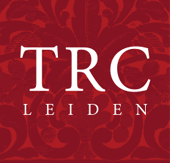For hundreds of years India has been exporting textiles to the east coast of Africa, and hence onto the eastern Mediterranean via the Red Sea. During the Roman period, for example, Indian cotton textiles found their way to the Red Sea ports of Berenica and Myos Hormos, later known as Quseir al-Qadim. The Periplus of the Erythraean Sea, a shipping manual written in Greek during the mid-first century AD, provides information about the type of goods, including textiles, that travelled to and from India, East Africa, the Red Sea and the Arabian Peninsula.
 Fragment of medieval cotton textile from India, excavated at Quseir al-Qadim, Egypt, in early 1980s (TRC 2020.0245b).Quseir al-Qadim was a busy port during the Roman period and contemporary Indian cotton textiles were found at the site, but when the economic conditions declined in the 2nd century the port of Quseir went into decline. A thousand years later however, the Egyptian economy was once more booming and the port was active for about another 150 years.
Fragment of medieval cotton textile from India, excavated at Quseir al-Qadim, Egypt, in early 1980s (TRC 2020.0245b).Quseir al-Qadim was a busy port during the Roman period and contemporary Indian cotton textiles were found at the site, but when the economic conditions declined in the 2nd century the port of Quseir went into decline. A thousand years later however, the Egyptian economy was once more booming and the port was active for about another 150 years.
During that time, in the 13th and 14th century, Quseir al Qadim also saw the import of cotton and silk textiles from western India. Some of them were transported to southern Egypt and were found at medieval sites such as Gebel Adda and Qasr Ibrim.
Other textiles were moved northwards to Fustat, the capital of Egypt at that time and now a suburb of modern Cairo. The TRC Colleciton includes fragments of these medieval Indian textiles, discovered at Quseir al-Qadim in the early 1980s.
The type, decoration and indeed quality of these medieval cotton textiles were varied. Some of the pieces, excavated in he 1980s, were directly printed using small blocks that appear to have imitated Chinese seals.
Other textiles were resist-dyed with wax and have a lightly coloured design on a darker ground. There were also examples of block printed textiles, some of which have a design of stylised animals and birds on either side of a tree, a traditional design associated with the tree-of-life.


